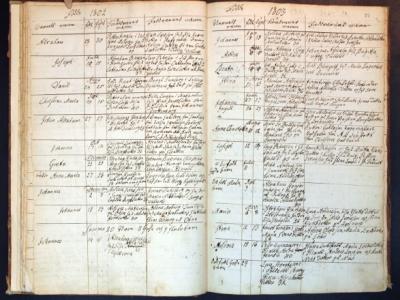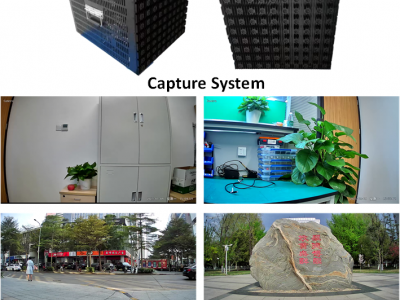Image Processing
DIDA is a new image-based historical handwritten digit dataset and collected from the Swedish historical handwritten document images between the year 1800 and 1940. It is the largest historical handwritten digit dataset which is introduced to the Optical Character Recognition (OCR) community to help the researchers to test their optical handwritten character recognition methods. To generate DIDA, 250,000 single digits and 200,000 multi-digits are cropped from 75,000 different document images.
- Categories:
 1583 Views
1583 ViewsWe present a 4D Light Field (LF) video dataset collected by the camera matrix, to be used for designing and testing algorithms and systems for LF video coding and processing. For collecting these videos, a 10x10 LF capture matrix composed of 100 cameras is designed and implemented, and the resolution of each camera is 1920x1056. The videos are taken in real and varying illumination conditions. The dataset contains a total of nine groups of LF videos, of which eight groups are collected with a fixed camera matrix position and a fixed orientation.
- Categories:
 1517 Views
1517 Views
Rembrandt contains data generated through the Glioma Molecular Diagnostic Initiative from 874 glioma specimens comprising approximately 566 gene expression arrays, 834 copy number arrays, and 13,472 clinical phenotype data points. These data are currently housed in Georgetown University's G-DOC System and are described in a related manuscript .
- Categories:
 435 Views
435 Views
The dermoscopic images considered in the paper "Dermoscopic Image Classification with Neural Style Transfer" are available for public download through the ISIC database (https://www.isic-archive.com/#!/topWithHeader/wideContentTop/main). These are 24-bit JPEG images with a typical resolution of 768 × 512 pixels. However, not all the images in the database are in satisfactory condition.
- Categories:
 1582 Views
1582 Views
Recent works that utilized deep models have achieved superior results in various image restoration (IR) applications. Such approach is typically supervised, which requires a corpus of training images with distributions similar to the images to be recovered. On the other hand, the shallow methods, which are usually unsupervised remain promising performance in many inverse problems, \eg, image deblurring and image compressive sensing (CS), as they can effectively leverage nonlocal self-similarity priors of natural images.
- Categories:
 186 Views
186 ViewsReverse transcription-polymerase chain reaction (RT-PCR) is currently the gold standard in COVID-19 diagnosis. It can, however, take days to provide the diagnosis, and false negative rate is relatively high. Imaging, in particular chest computed tomography (CT), can assist with diagnosis and assessment of this disease. Nevertheless, it is shown that standard dose CT scan gives significant radiation burden to patients, especially those in need of multiple scans.
- Categories:
 2932 Views
2932 Views
The dataset consists of two classes: COVID-19 cases and Healthy cases
- Categories:
 1986 Views
1986 ViewsDATA PROVIDED PRIOR TO ACCEPTANCE OF THE ASSOCIATED MANUSCRIPT.
This dataset contains video sequences and stereo reconstruction results supporting the IEEE Access contribution "Stereo laryngoscopic impact site prediction for droplet-based stimulation of the laryngeal adductor reflex" (J. F. Fast et al.).
See readme file for further information.
- Categories:
 284 Views
284 Views
This contains data corresponding to the paper Multi-Resolution Data Fusion for Super-Resolution Imaging.
- Categories:
 196 Views
196 Views


